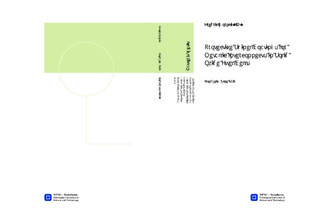Protective Spinel Coatings for Metallic Interconnects in Solid Oxide Fuel Cells
Master thesis
Permanent lenke
http://hdl.handle.net/11250/249571Utgivelsesdato
2014Metadata
Vis full innførselSamlinger
Sammendrag
Solid oxide fuel cells (SOFC) are one of the most effective ways to produce electrical energy and are seen as the most promising energy producer from a variety of fuels. To produce a sufficient amount of energy, several SOFCs are coupled in series with interconnects. Due to the progress made in lowering operating temperatures of SOFCs these interconnects can be metallic, among which the most promising are ferritic stainless steels. However these steels contain Cr and need to be coated to prevent evaporation of chromia from poisoning the cathode in the fuel cell. Spinels are seen as the most promising coatings and this project focuses on spinel manganese cobalt oxide. The aim is to make dense and crack-free manganese cobalt oxide coatings on Crofer 22 APU steel by spray pyrolysis of nitrate solutions and tailoring of the heat treatment program. The effect of substrate temperature, flow rate, volume, dilution, multiple layers and heat treatment have been investigated. The deposited coatings have been evaluated with respect to surface microstructure, thickness, density and stability at "operating conditions". The study show that ideal spraying temperature is highly dependent on the thermal behavior of the individual precursor solution. Alteration of flow rate and volume was not successful in depositing crack free coating. Diluton of precursor solution gave crack free coatings, but coatings did not withstand heat treatment. Multiple layers resulted in coating with thickness of 7.87 micrometer. Changing the heating rate in the first heat treatment step in nitrogen had a positive effect on coatings sprayed with diluted precursor solution. Long term oxidation in air at for 100 h at 800 °C showed sintering effects in coatings indicating that initial heat treatment of 5 h at 1000 °C in nitrogen and 5 h at 800 °C in air was not successful in sintering the coatings. All samples showed formation of a Mn, Cr and O layer in the interface between chromia and substrate after initial heat treatment. The presence of CrN island in the uncoated side of the substrate was observed for all samples heated with slower heating rate in nitrogen.
